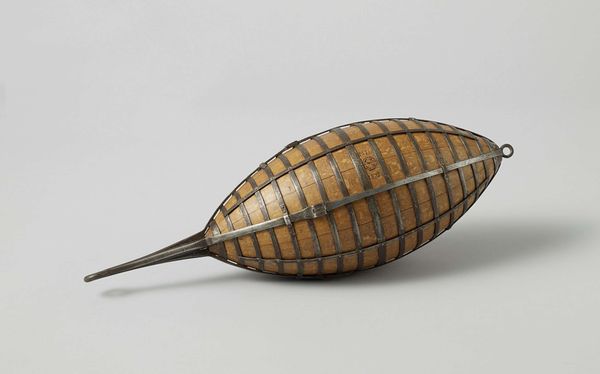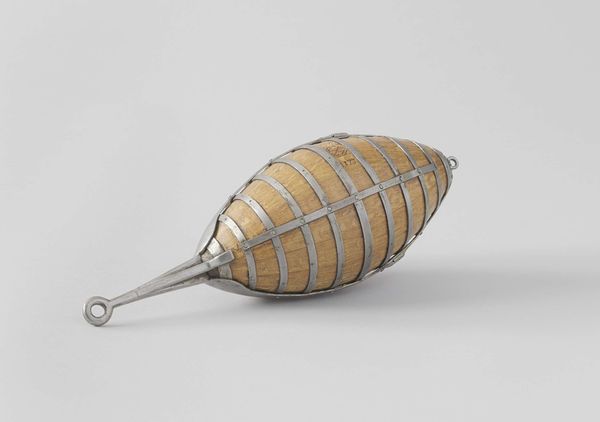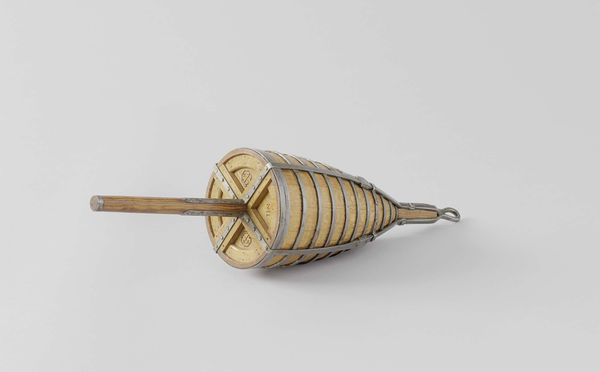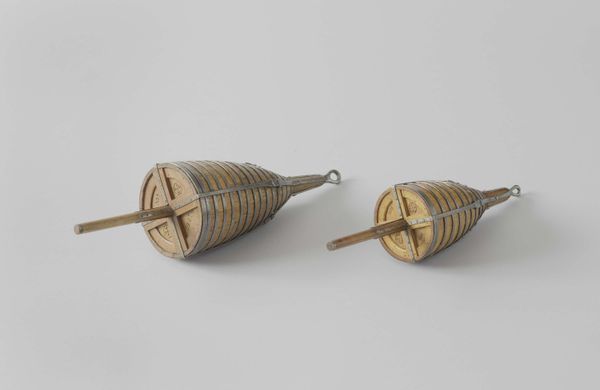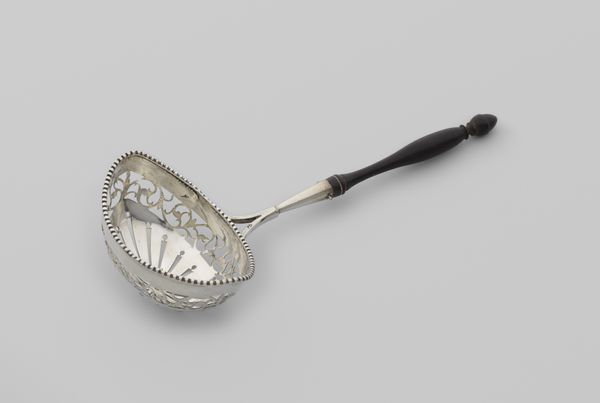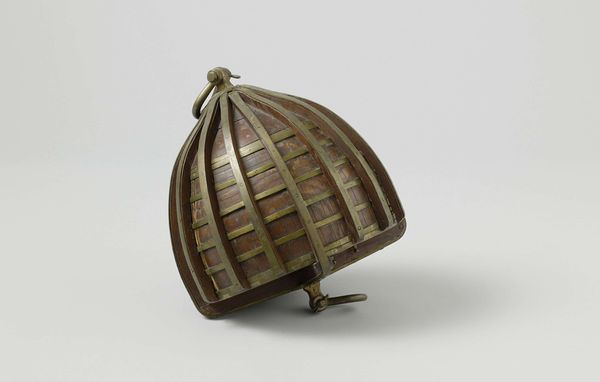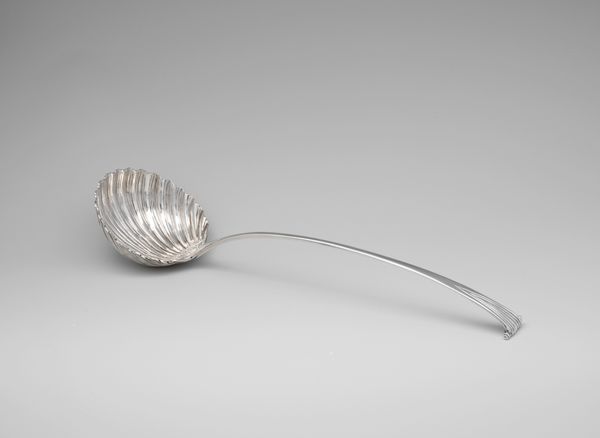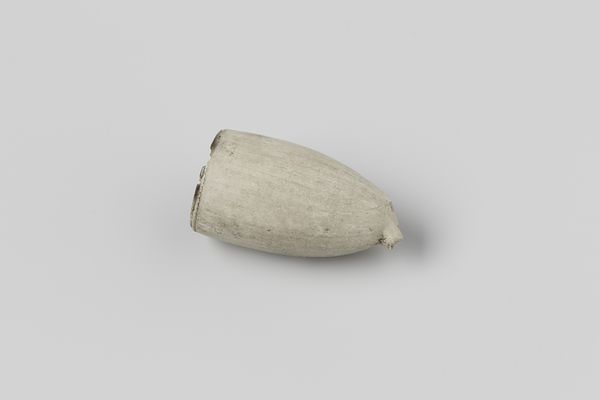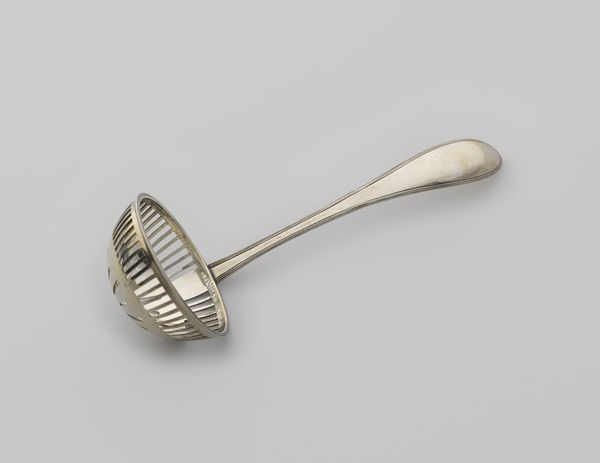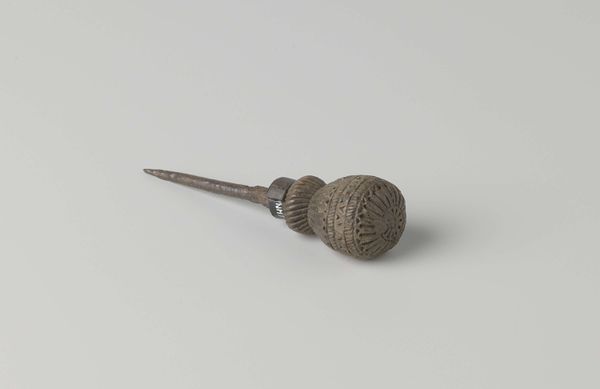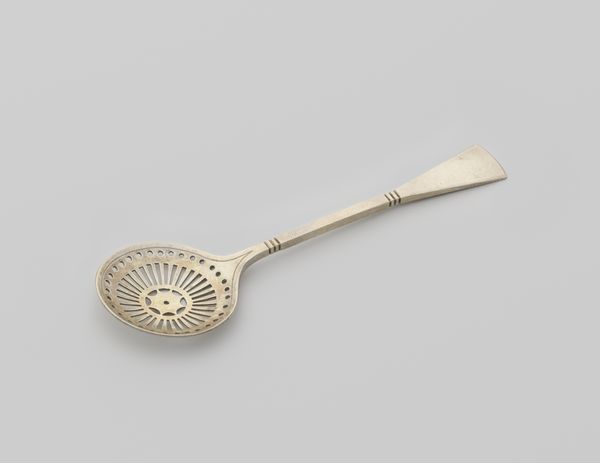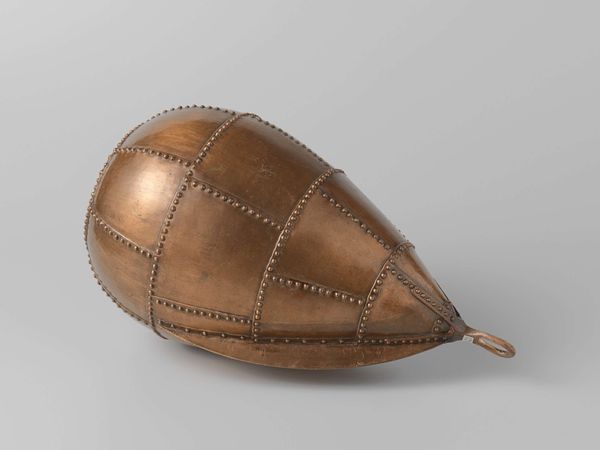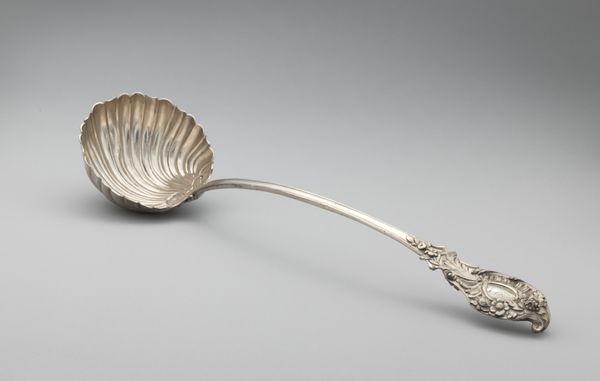
mixed-media, metal, sculpture, wood
#
mixed-media
#
metal
#
sculpture
#
wood
Dimensions: length 38 cm, diameter 12.5 cm
Copyright: Rijks Museum: Open Domain
Editor: So this is a Model of a Buoy, dating back to 1873, a mixed-media piece crafted from wood and metal. It almost looks like a strange, metallic fruit. What are your initial thoughts? Curator: It’s compelling how seemingly functional objects reveal so much about the historical context in which they were made. Consider the date, 1873. What’s happening in terms of maritime trade, industrial innovation, and colonial expansion at that time? Editor: I guess there's this huge surge of global shipping going on, which would mean navigation is becoming increasingly important, but how does the object speak to these dynamics? Curator: This buoy, in its design, speaks to increased sea traffic but more profoundly to who is included and who is excluded from these advances. Think about the exploitation inherent in resource extraction and the labor involved in manning these ships. This simple navigational aid becomes a symbol of a much larger system. What materials do you see in the piece and what associations might we give them? Editor: There’s the juxtaposition of sturdy metal and buoyant wood, perhaps speaking to a need for both resilience and visibility? How does a seemingly humble piece become such an indictment? Curator: Absolutely, this isn't merely a 'thing'; it embodies power structures. Think about who benefits from safer sea routes versus who might be displaced or exploited by them. This buoy stands as a quiet yet potent marker within those unequal exchanges. It urges us to investigate the historical backdrop, economic considerations, and social power struggles that framed its creation. What more does that reflection offer you, here? Editor: It changes everything. Seeing it as connected to all those larger, harsher realities... it almost makes the object feel less neutral, more charged, right? Curator: Precisely. Now, we might never look at something functional in quite the same way.
Comments
No comments
Be the first to comment and join the conversation on the ultimate creative platform.
